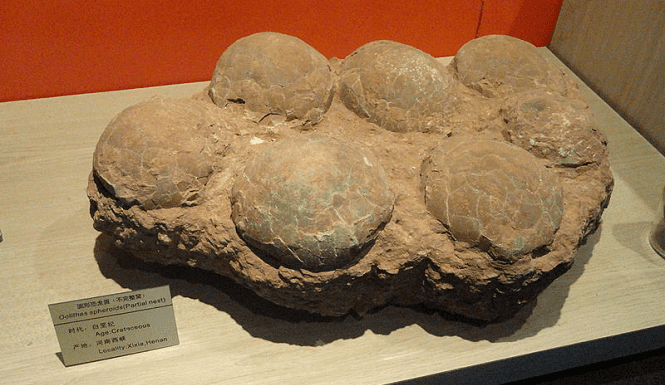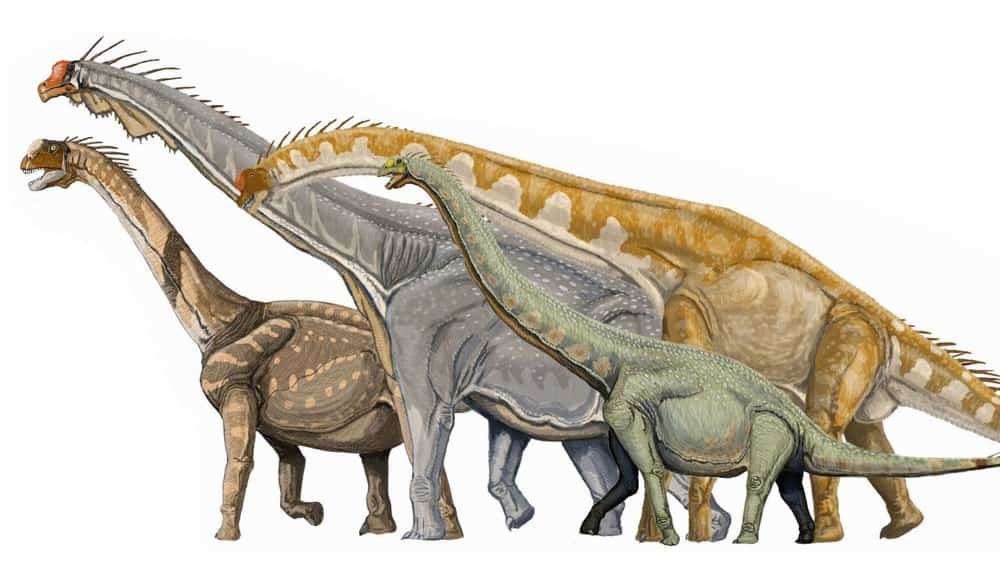
Dinosaurs with long necks (most commonly, sauropods) have fascinated our imagination since we first found out about them. However, long neck dinosaurs are more than just a curiosity — they played a key role in their ecosystem. These dinosaurs also show what amazing results evolution can have over the years.
But let’s not get ahead of ourselves. Let’s look at some of the most famous long-necked dinosaurs and then take a more in-depth look at what we know about them — and how.
- Brachiosaurus: Known for its long neck and large size, with forelimbs longer than hind limbs.
- Diplodocus: Characterized by an extremely long tail and neck, and a small head.
- Apatosaurus (formerly known as Brontosaurus): Notable for its massive body and long, whip-like tail.
- Titanosaur: A diverse group, including some of the largest terrestrial animals ever, like Argentinosaurus and Patagotitan.
- Mamenchisaurus: Recognized for having one of the longest necks relative to body size.
- Giraffatitan: Originally classified as a species of Brachiosaurus, known for its immense size.
- Camarasaurus: A more robustly built sauropod with a relatively shorter and heavier neck.
- Barosaurus: Similar to Diplodocus, with an exceptionally long neck and elongated body.
- Amargasaurus: Unusual for its double row of spines along the neck and back.
- Euhelopus: Known for its elongated neck and distinctive weight-bearing adaptations in its legs.
What are sauropods?
Try to imagine a couple of dinosaurs roaming the Mesozoic land. The fearsome Tyrannosaur probably springs to mind, as do the mighty triceratops and stegosaurus. But the odds are you’re also thinking about a different type of dinosaur: one that has a long neck.
The sight of such a dinosaur must have been breathtaking. Imagine walking in a lush, green forest 150 million years ago. You hear a distant rumble. You look around, and you don’t see anything; and then, you look up. Emerging from the foliage, you see it—a huge dinosaur stretching its long neck to graze from treetops like a giraffe, high above the imposing tree line.
These magnificent types of dinosaurs, grouped in a clade called sauropods, have fascinated us for generations, and you’ve probably seen them featured in everything from textbooks to blockbuster movies.
Sauropods were herbivorous (plant-eating), usually quite long-necked quadrupeds (four-legged). These dinosaurs had small heads compared to their enormous bodies and usually sported long tails. Their back legs were sturdy and straight, ending in feet that resembled clubs. These feet had five toes, but only the innermost three or sometimes four had claws. Their front legs were leaner, like pillars meant for bearing weight.
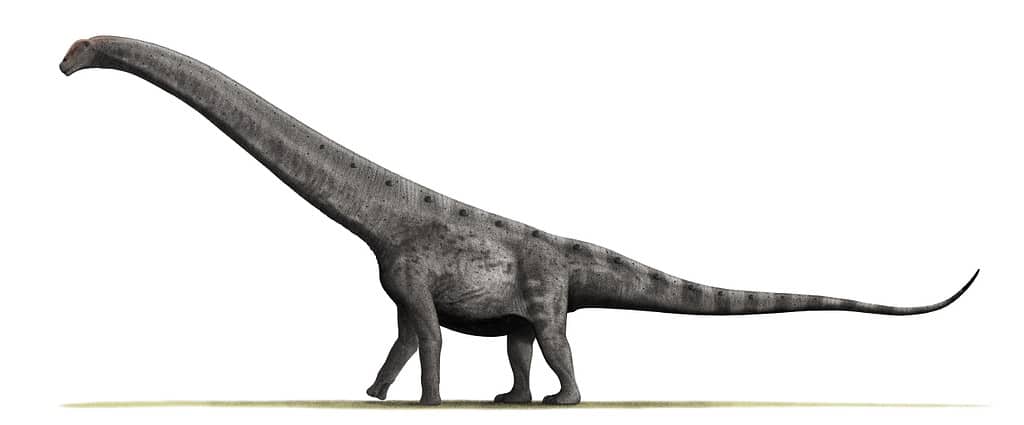
The sauropods’ most defining characteristic was their size. The smallest sauropods were about 5 to 6 meters, or 20 feet long, and were probably the largest animals in their ecosystem. But the largest sauropods, like the Supersaurus, came in at 33 to 34 meters (108 to 112 ft) long. Diplodocus, the old record holder, was also very long. There’s even some speculation that a dinosaur called Amphicoelias fragillimus (now Maraapunisaurus) may have measured a whopping 58 meters (190 ft) long (although this is debated).
They are by far the largest terrestrial dinosaurs in the Earth’s history, and may have even been bigger than the blue whales. For comparison, the longest terrestrial animal alive today, the African elephant, can only reach lengths of 7.3 meters (24 ft).
Sauropod evolution — how the long neck dinosaurs came to be
The name for the dinosaur order ‘Sauropoda’ was coined by Othniel Charles Marsh in 1878, and is derived from Ancient Greek, meaning “lizard foot”. Paleontologists would find traces of these giant dinosaurs more often than actual fossils. The oldest sauropod we know clearly dates from the early Jurassic — 228 million years ago. Over the course of the Jurassic, they became increasingly common. Then, by the Cretaceous (the period when dinosaurs like triceratops or T-Rex existed), they were widespread.
A particular sauropod group, called the titanosaurs became the dominant long-necked dinosaurs in the late Cretaceous. As the name implies, the titanosaurs were indeed titanic. They were the last surviving group of long-necked sauropods and reached well over 30 meters in length — maybe even up to 40 meters.
Long-necked dinosaurs didn’t just appear overnight. They evolved over millions of years, adapting to their environments and available food sources. These giants likely descended from smaller, bipedal ancestors. As they transitioned to a four-legged stance, their necks elongated, providing them with an advantage in reaching for vegetation.
Researchers don’t actually agree on how sauropods held their heads and necks, and the postures they could achieve in life. Their necks were so tall that even just pumping blood to that height would have been challenging if they held their necks up straight. But the long necks should have provided an evolutionary advantage, otherwise they wouldn’t have emerged.
According to some computer models of sauropod necks, sauropod necks were capable of sweeping out large feeding areas without needing to move their bodies, which was an advantage. However, the same study concluded that they would have been unable to be retracted to a position much above the shoulders for exploring the area or reaching higher.
There is still a lot of debate about the long necks of these dinosaurs. But what is clear is that sauropods had a number of evolutionary changes to be able to function with this unusual biology. They evolved vertebrae that consisted of 60% of air, and specialized air sacs facilitated the flow of air through the necks, helping the dinosaurs to breathe in.
Being huge meant they had no major predators, at least as adults. The long necks meant they could eat a lot of food around them without moving too much. But getting to this point required a lot of adaptation and a lot of biological changes.
Sauropod habitat and ecosystems
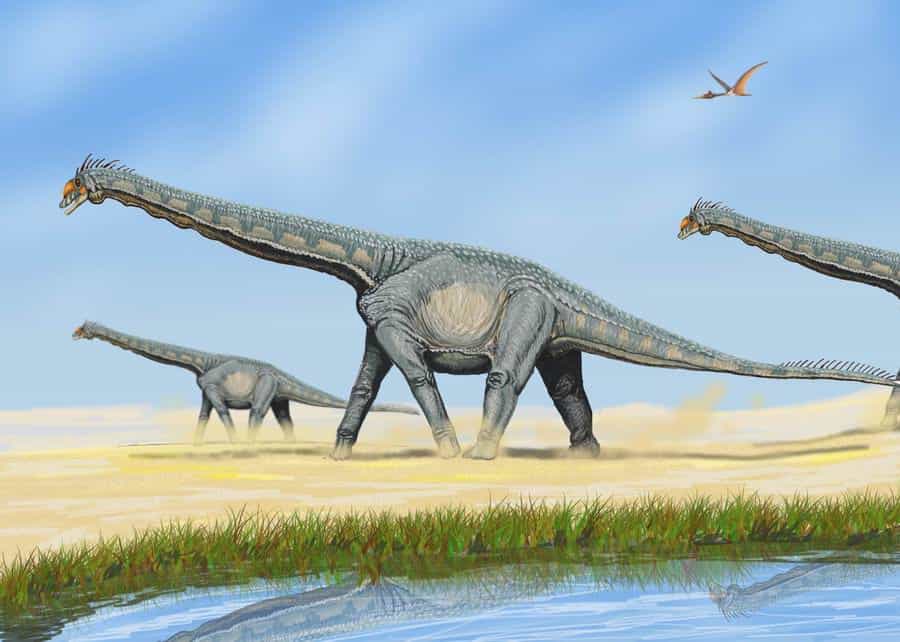
The Mesozoic Era, especially during the Jurassic and early Cretaceous, was generally warmer than today. There were no polar ice caps, so global temperatures were higher, leading to a warm and humid climate in many parts of the world.
The continents during the Mesozoic were in different positions than they are today. Initially, the land was united in a supercontinent called Pangaea, which began to break apart during the time of the sauropods. This created vast coastlines and inland areas with distinct environments.
The dominant plants during the Mesozoic included ferns, horsetails, cycads, ginkgoes, and conifers. Flowering plants (angiosperms) started to appear and diversify in the Cretaceous. Sauropods would have feasted on these plants, using their peg-like teeth to strip vegetation, and their long necks allowed them to feed both on the ground and from trees.
The environment of sauropods wasn’t just about the landscape and climate; it also included other living creatures. Sauropods shared their world with a diverse array of organisms, from other herbivorous and carnivorous dinosaurs to early mammals, reptiles, amphibians, and a variety of flying and marine reptiles.
Tying the Long Neck to Modern Animals
Today, no animals come close to the grandeur of these long-necked dinosaurs. However, if you want a modern-day comparison, think about the giraffe. Giraffes, like their prehistoric counterparts, have adapted long necks to reach vegetation that’s out of reach for other animals.
But it’s important to keep in mind that giraffes are not related to any long-neck dinosaur. The giraffes are mammals, dinosaurs were reptiles. Any similarities between them, such as a long neck, happened due to convergent evolution — a phenomenon where unrelated species develop similar traits. This makes sense because if animals face similar environmental challenges, they may develop the same adaptation. But it does not mean they are related.
So keep in mind: dinosaurs with long necks and mammals with long necks are completely unrelated.
How sauropods are named? It’s not just about size

Sure, these dinosaurs were massive, but their names often tell us more than just their dimensions. Derived from Greek and Latin roots, these names offer clues to the dinosaur’s characteristics, discovery locations, or even the scientists who found them. You’ll encounter names like Diplodocus, which means “double beam,” and Apatosaurus, which intriguingly means “deceptive lizard.”
The Famous Brachiosaurus
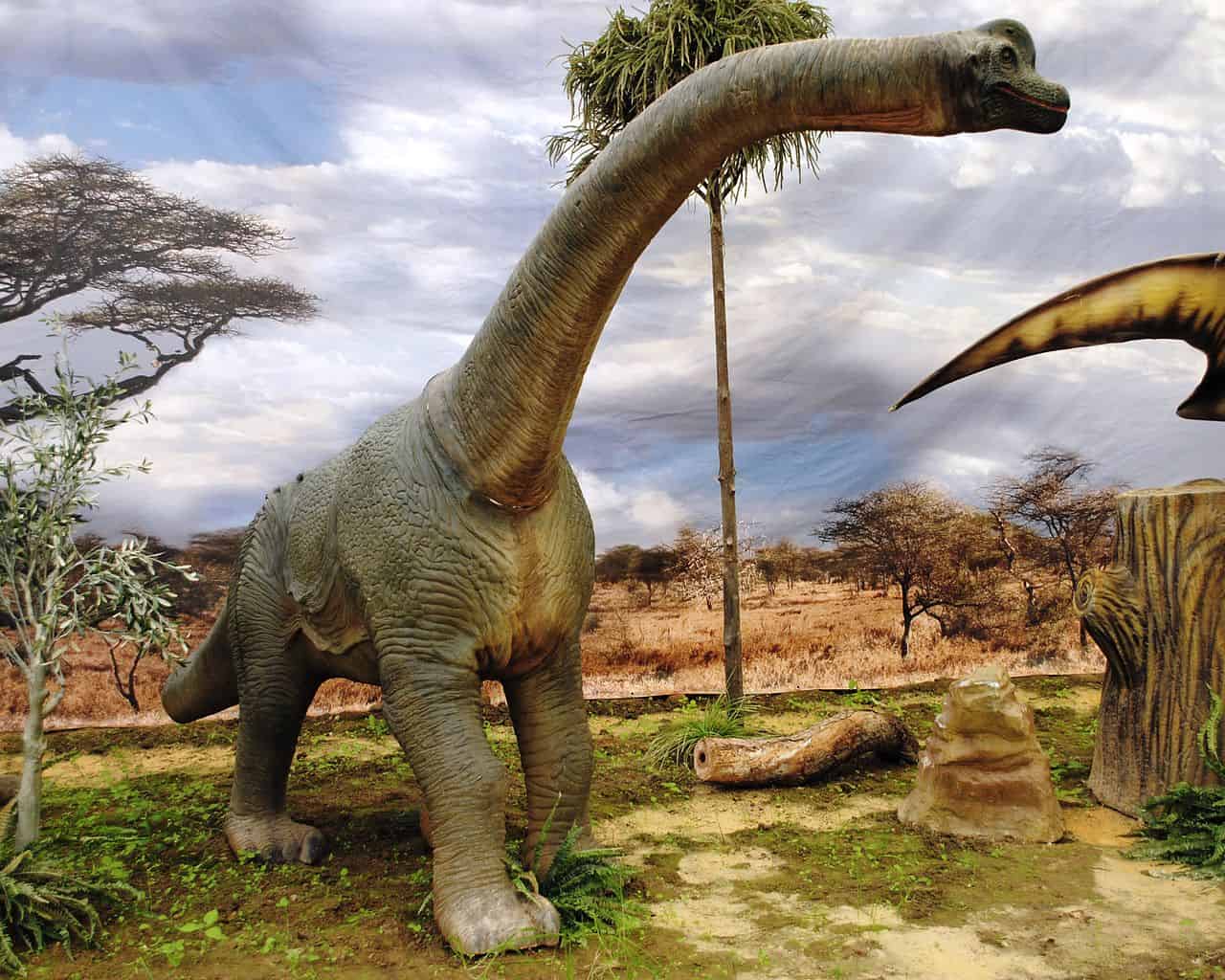
Meet the Brachiosaurus, a name you probably recognize. This colossal creature roamed North America during the Late Jurassic period. Its name translates to “arm lizard,” describing its unusually long front limbs. Unlike many long-necked dinosaurs that held their necks out horizontally, Brachiosaurus held its neck more vertically, allowing it to reach vegetation other dinosaurs couldn’t.
The African Star Nigersaurus
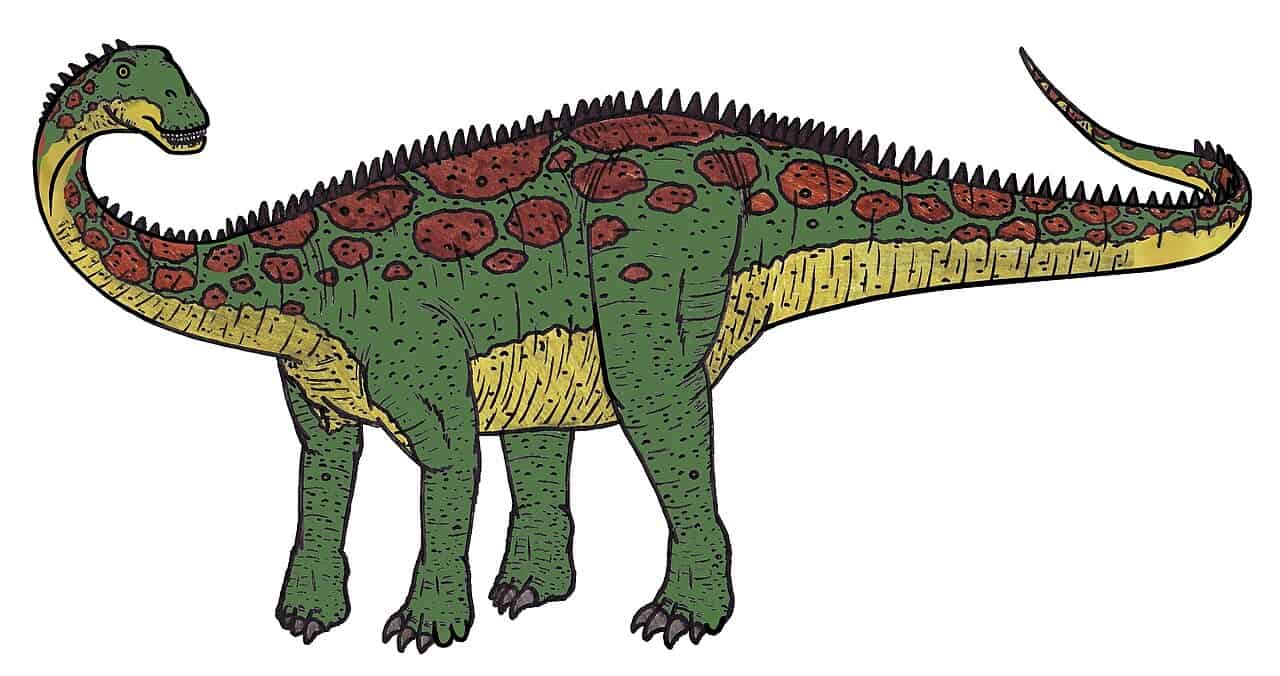
Venture to the African continent, and you’ll find a dinosaur with a name rooted in geography. Nigersaurus, or “Niger reptile,” roamed what is now modern-day Niger. Its unique, shovel-shaped mouth allowed it to feed close to the ground, unlike its taller relatives. Think of it as the lawnmower of the Jurassic period.
The Record Breaker Argentinosaurus

In the realm of extreme, no dinosaur quite compares to Argentinosaurus. Native to what is now Argentina, this behemoth likely reached lengths of up to 100 feet. Not surprisingly, its name means “silver lizard,” named after Argentina, the “land of silver.” Argentinosaurus is not just a celebrity for its size but also because it has one of the longest names among dinosaurs!
The misunderstood Apatosaurus
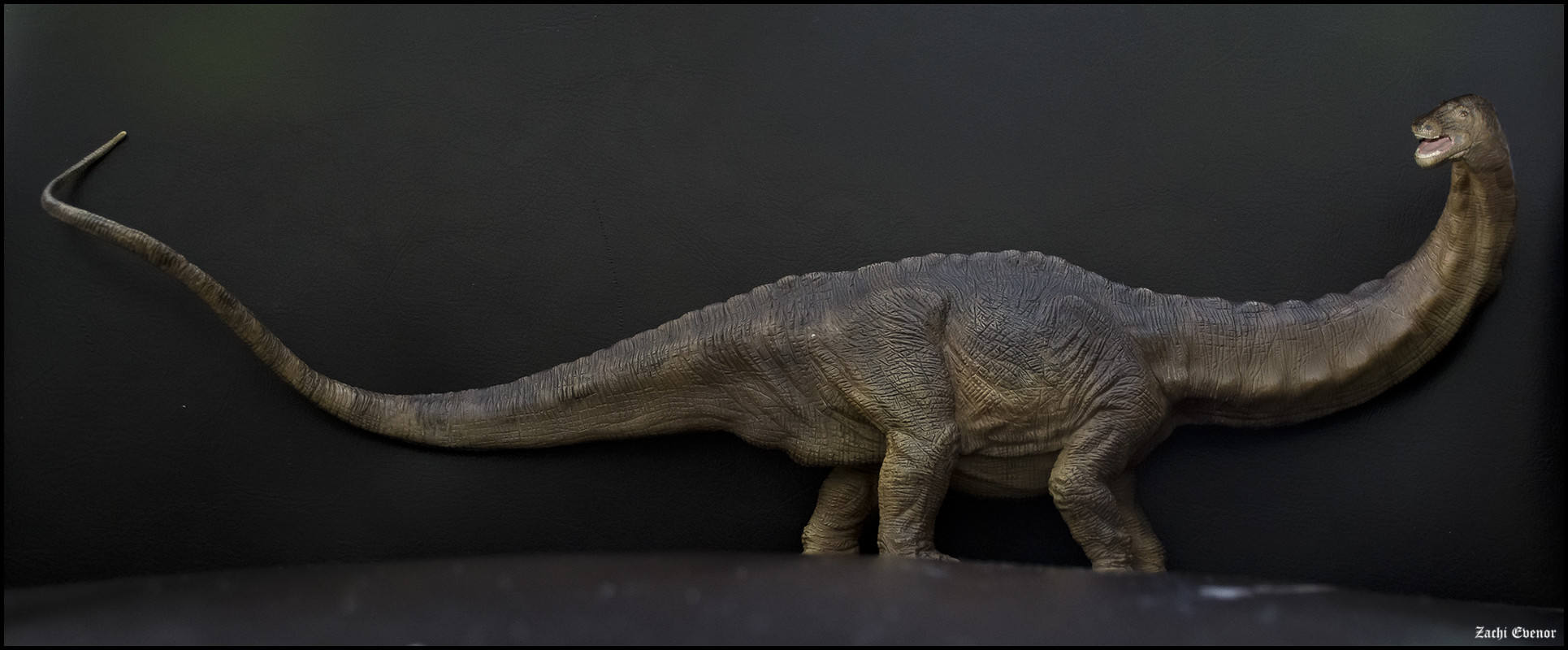
Once famously known as Brontosaurus, Apatosaurus was a massive dinosaur that lived during the Late Jurassic period. It had a long neck and tail, with a stout body. Its length reached up to about 75 feet (23 meters), and it roamed the floodplains of what is now North America. Despite its massive size, its neck was so long and flexible that it likely fed on ferns and low-lying vegetation.
The dazzling Diplodocus
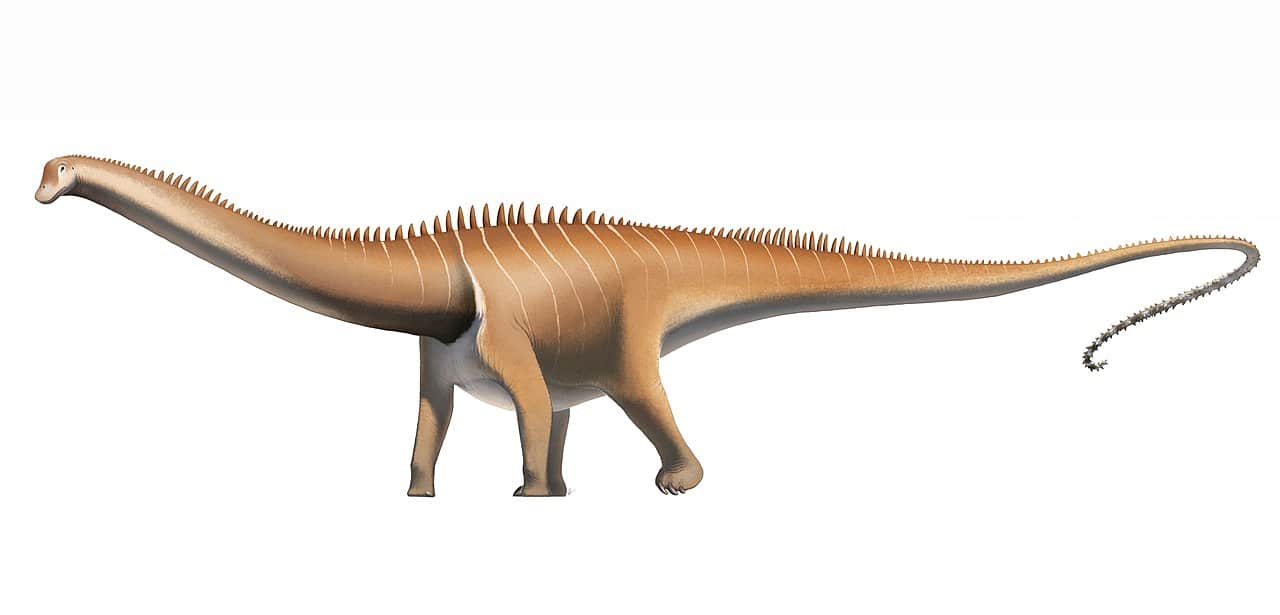
Characterized by its extremely long neck and tail, Diplodocus is one of the most iconic sauropods. It lived during the Late Jurassic period and reached lengths of up to 100 feet (30 meters). Its whip-like tail might have served as a defensive mechanism against predators, while its peg-like teeth were suited for stripping soft vegetation.
The Titanic Titanosaurus
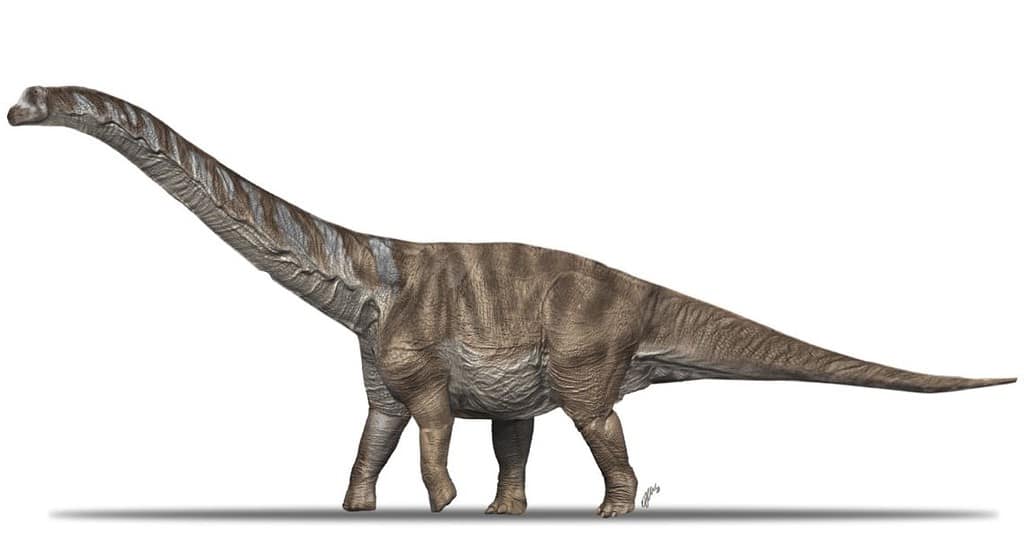
Hailing from the Late Cretaceous period, Titanosaurus is a genus that lived in what is now India and South America. Though not as long as some of its relatives, Titanosaurus was still a sizable creature, with certain species possibly reaching up to 40 feet (12 meters) in length. Its remains have been found in various regions, suggesting it adapted to different environments.
Unveiling Lesser-Known Giants
Beyond the A-listers like Brachiosaurus and Argentinosaurus, there are lesser-known but equally intriguing long-necked dinosaurs. Take the Mamenchisaurus, for instance. This dinosaur had one of the longest necks relative to its body size. Or the Barosaurus, a close relative of the Diplodocus, known for its particularly elongated neck and small head.
There were a lot of long-necked dinosaurs — a testament to how effective this evolutionary path must have been.
Long Neck Dinosaurs FAQ
They’re most commonly known as sauropods. This group of dinosaurs is characterized by their long necks, long tails, small heads, and massive bodies.
While the exact reason is still a topic of research, scientists believe that their long necks allowed them to reach food from tall trees, giving them an advantage over other herbivores. Some theories also suggest that long necks helped them regulate body temperature or even helped in display or social interactions.
Yes, many sauropods were the largest land animals to ever exist. Examples include the Argentinosaurus and Brachiosaurus. Some of these giants could reach lengths of over 100 feet!
Sauropods were herbivores, which means they ate plants. Their diet mainly consisted of ferns, conifers, and other prehistoric plants. Their long necks allowed them to reach vegetation at various heights.
Their massive size was a natural deterrent to many predators. However, they also had long, whip-like tails that could be used to fend off attackers. Some, like the Diplodocus, are believed to have used their tails as a weapon.
Yes, large theropod dinosaurs like the T-Rex or the Allosaurus might have preyed on younger or weaker sauropods.
Fossil evidence! Paleontologists have discovered and studied fossils of sauropods from all over the world. These fossils provide insights into their size, diet, behavior, and more.
While many were enormous, not all sauropods were giants. Some species were relatively small, with lengths of around 15 feet or even less.
Sauropods lived on every continent, including Antarctica! Different species were adapted to various environments, from dense forests to open plains.
Conclusion: More Than Just Dinosaurs
Long-necked dinosaurs are more than just relics of the past. They’re fascinating subjects that offer clues into evolution, ecology, and the dynamic history of our planet. So the next time you find yourself captivated by the sight of a long-necked dinosaur in a museum or a movie, remember—there’s a whole world of science and history behind that lengthy neck.
You can also remember that these creatures, probably the largest that ever roamed the land, are yet imperfectly understood. There are many things we don’t understand when it comes to sauropods, which is why paleontologists are constantly discovering new insights.
And there you have it—a closer look at the long-necked dinosaurs that once roamed our planet. From their intricate names to their fascinating biology, these creatures offer a compelling snapshot of life on Earth millions of years ago. So keep wondering, keep exploring, and most importantly, keep looking up—you never know when you might encounter a piece of prehistoric wonder.



